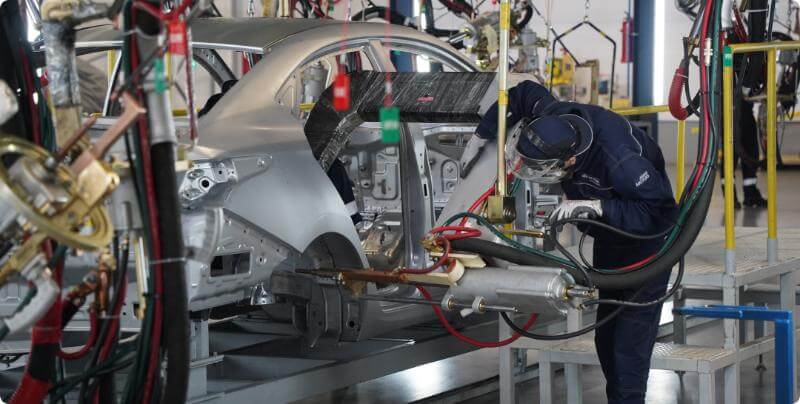How Automated Employee Scheduling Strengthens Union Relations in Shift-Based Industries

Key Takeaways:
- Employee scheduling automation in unionized workplaces significantly improves operational efficiency and reduces compliance-related costs.
- Intelligent scheduling solutions, such as Shiftboard’s workforce scheduling software, are designed to handle complex union agreements, reducing grievances and improving labor relations.
- Specialized scheduling automation fosters transparency, builds trust, and supports workforce reskilling and upskilling initiatives.
Managing a unionized workforce in shift-based operations comes with its own set of challenges. Balancing the requirements of complex union contracts while maintaining operational efficiency can quickly become overwhelming. With a constant need to meet strict regulatory requirements, accommodate diverse worker expectations, and ensure fair labor practices, managers often find themselves bogged down in administrative tasks—especially when relying on manual processes.
Thankfully, intelligent automation software is changing the game for workforce scheduling, bringing with it significant improvements in compliance, operational efficiency, and, most importantly, labor relations. By using advanced scheduling solutions, companies can better meet regulations, streamline processes, and foster stronger relationships with their workforce.
Understanding Employee Scheduling Automation in Unionized Workplaces
Imagine having a tool that knows every detail of your collective bargaining agreements (CBAs)—from who worked overtime last week to tracking employee certifications and availability in real-time. That’s exactly what specialized scheduling automation offers. At its core, this technology ensures that every scheduling decision aligns with your contract’s requirements, eliminating the guesswork and manual errors that are all too common.
The impact is clear: Shiftboard customers, on average, reduce scheduling errors by 55% and employee grievances by 26%. But it’s about more than scheduling accuracy. Scheduling automation brings tangible benefits beyond compliance: fewer gaps in shift coverage, less stress on managers, and a workforce that feels valued and understood.
How Automation Ensures CBA Compliance
In my experience, managing CBAs in unionized environments can feel like navigating a maze that’s constantly shifting. But with intelligent scheduling automation, that maze becomes far more manageable. Here’s how automation makes a difference:
- Turning complex rules into real-world actions: Automation tools can translate even the most intricate contract documents into logical, enforceable rules that guide scheduling decisions.
- Tracking compliance in real-time: Systems like Shiftboard’s rule engine continuously monitor employee certifications, workload, and availability to ensure schedules comply with union agreements—without any manual intervention.
- Minimizing human error: Manual scheduling often leaves room for mistakes, but automation reduces errors by adhering to a worksite’s specific workflows and rules.
- Staying current with changing regulations: Labor laws and union agreements are ever-evolving, making it hard to keep up. Automated systems help you stay compliant by tracking changes and updating schedules accordingly.
By embracing automation, you’re not just ticking off compliance requirements—you’re creating a culture of fairness and transparency that benefits both your workforce and your organization. With compliance costs in manufacturing more than double those of other industries, using a tool that simplifies these processes is a significant advantage.
Case Study: Reducing Union Grievances with Automation
Dealing with union grievances is one of the most time-consuming aspects of managing a unionized workforce. But what if there was a way to dramatically reduce these issues?
We’ve seen this happen firsthand with one of our clients, an auto manufacturer. They were under increasing pressure to improve compliance with their union agreements. Frequent scheduling complaints, costly penalties, and hours of manual work each week were weighing them down. Implementing an automated scheduling system turned things around quickly.
Here’s what they achieved:
- A 93% reduction in scheduling complaints: Workers trusted the system because it was fair and transparent.
- Savings of $800 per employee per year: Union penalties from wrongful overtime assignments were practically eliminated.
- Scheduling time cut from 40 hours to 8 hours per week: That’s a whole workweek saved, freeing up managers to focus on more strategic tasks.
- $1.5 million saved in overtime costs in the first year: That’s the kind of impact that really makes a difference.
The key to their success was digitizing their union contracts, implementing real-time work-hour tracking, and automating fair overtime distribution. It wasn’t just about improving compliance—it was about building trust with their unionized workforce. By offering workers transparency and ensuring they got the benefits promised in their contracts, the company created a system that was fair for everyone.
Why Unions Are Backing Scheduling Automation
You might be surprised to learn that many union representatives are embracing employee scheduling automation. The reason is simple: these systems offer real, tangible benefits to workers. Here’s why automation is gaining their support:
- Ensures equitable treatment: Automated scheduling systems consistently apply rules, which leads to fewer conflicts and greater satisfaction among workers.
- Safeguards worker rights: Highly configurable scheduling software guarantees that the terms negotiated in union agreements are enforced fairly, every time. This consistency builds trust between management and the union.
- Boosts job satisfaction: Many organizations report that their employees are happier with automated scheduling, thanks to the consistency and fairness it provides—a major union priority.
- Opens doors for skill development: As automation reshapes industries, unions are pushing for upskilling and reskilling opportunities to ensure their members remain relevant. Scheduling automation plays a key role in this transformation.
More and more, unions and management are working together to protect jobs and equip workers for future demands. By integrating scheduling with skills development programs, organizations can help their workforce adapt to an ever-changing landscape—benefiting both employees and the business.
Conclusion
Automated workforce scheduling is reshaping the way organizations manage their unionized workforce. By improving compliance, boosting transparency, and strengthening relationships between management and unions, automation addresses the unique challenges of shift-based industries and creates more efficient, equitable workplaces.
As industries continue to evolve, organizations that embrace scheduling automation will be better equipped to meet the changing needs of their workforce and their business. Automation will remain a key tool for ensuring compliance, enhancing efficiency, and fostering strong labor relations for years to come.

